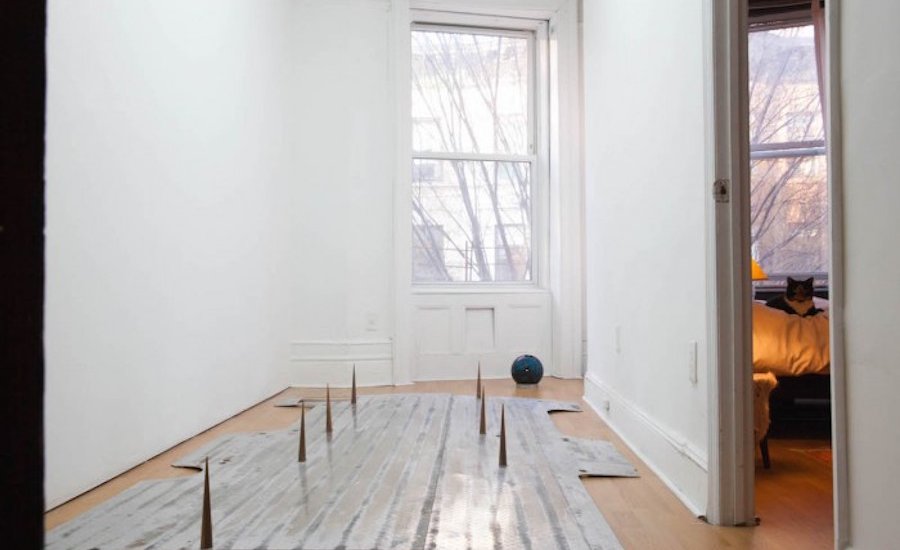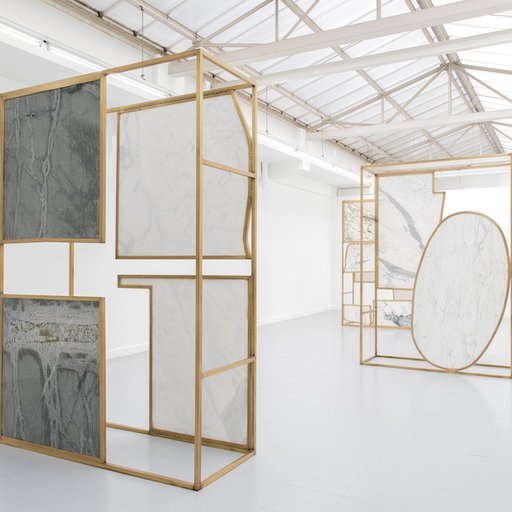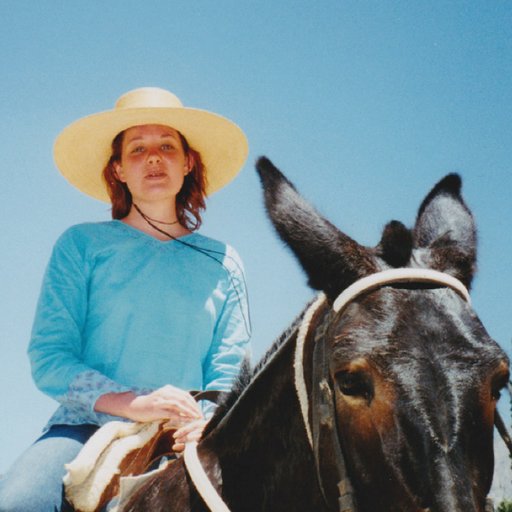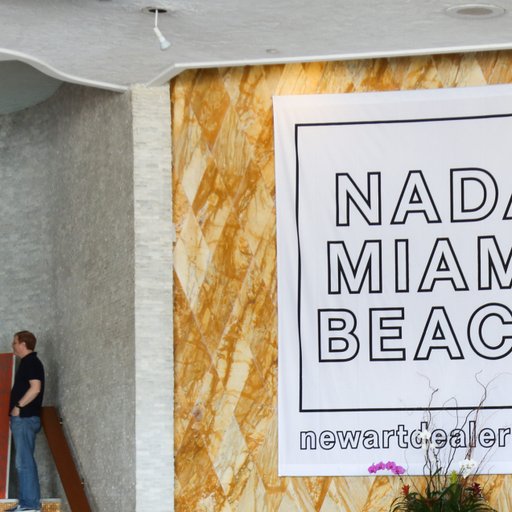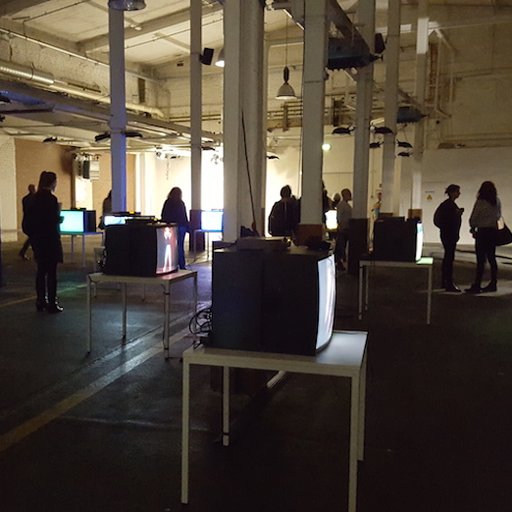When Frieze announced that it would premier its New York art fair on Randall's Island four years ago, detractors, loud ones, argued it was simply too uptown a venue to ever reach critical mass. Too far a hike from the city's regular art stomping grounds.
But yanking the contemporary art world North, at least on a temporary basis, worked, and ended up being not so temporary. Major galleries from New York and around the world, lured by Harlem’s historic spaces, gorgeous interiors, and low rents, are this month opening major presences in the neighborhood—with some of them relocating their flagship operations there. At the same, younger dealers are laying down roots in Harlem with experimental sites of the kind that used to open in Brooklyn or the Lower East Side. In doing so, they are joining a rich and established cultural community.
But wait. This isn’t just another article on the fact that the Harlem art scene is the next big thing—it’s not quite that time yet. Some of the region’s pioneers have already closed, such as Tatiana Pages , which has been replaced by a hair-extensions parlor.
Indeed, the persistent obstacles to Harlem-as-SoHo-1987 range from the emotional and political. Is such gentrification even welcome? Are art galleries that show predominantly white rosters out of place? For even longtime New Yorkers, the questions can also be mundane, procedural, and practical: where are Convent and Edgecomb streets, and does Adam Clayton Powell Jr. run parallel? How close together are these galleries, actually?
Well, now's the time to start answering those questions, because there are indications that the accelerating art gallery scene in culture-rich Harlem is here to stay. And the key indicator may just be Gavin Brown , the Harlem resident and trailblazing gallerist whose openings are thronged events no matter where they take place, and who has proven capable of making off-the-beaten-path destinations cool. When his much-anticipated but delayed gallery opens at West 126 th Street on May 21, it will already coincide with huge retail, real estate, and arts expansion in the immediate area.
Here are a few other reasons why the New York art scene is looking up these days.
1. HARLEM IS HUGE
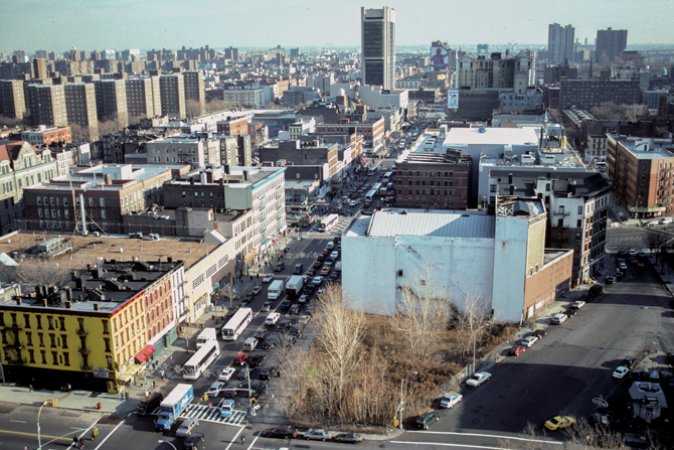
Several hundred thousand people live in the area between 110th and 155th Streets, the neighborhood’s ersatz and fluid borders. If Harlem were its own city, it would rank about the nation’s 26th largest. Population is up 7 percent since 2000, 118,000 new housing units have been built in recent years, and the median age of a Harlem resident is 34.1 years old, slightly younger than the average New Yorker (all according to Cushman & Wakefield’s 2015 report on Harlem.) The new residents of the region’s roomy, high-ceilinged townhouses have been largely underserved by the art community. In other words, there’s disposable income, a lot of wall space, and a culture that respects Culture.
2. THE COOL KIDS ARE RUNNING THINGS
The young dealer couple Martha Moldovan and Harry Schleiff, who works by day at Gavin Brown, opened their by-appointment-only space Rear Window in their home in April 2015, naming it after both the Alfred Hitchcock movie and the gallery’s main feature: it takes up the width of their 136 West 118th Street home’s back-facing glass aperture.
Openings so far have been more fun and relaxed than the Chelsea kind, says Schleiff, and the buzz has been excellent, especially for the Carlos Reyes show that turned the front door’s peephole inside out to show a distorted preview of the booby-trapped space inside (see the spikey top image). “Don’t call it a gallery—it's a project space, because we show our friends who are artists," says Schleiff.
3. ELIZABETH DEE IS MOVING ON UP

A trailblazer whose Independent art fair just ventured down to Tribeca, the longtime Chesea dealer and Harlem resident Elizabeth Dee is now relocating her gallery uptown to a new 2033 Fifth Avenue art emporium that stakes out the whole corner of a block. Although she is officially opening her new space in September 2016, private invite-only viewings are begining much earlier with selections by some of the gallery’s stable of artists—John Giorno, for example, and Julia Wachtel .
If the Harlem art gallery expansion has a element of real-estate play to it, this space is the one with location, location, location. The spot, catty-corner to Bill Clinton’s post-presidency office, is right off the neighborhood’s main drag and down the street from the legendary Apollo Theater. Plus, it heralds a good new look for art galleries. Big windows allow for the kind of roomy and tempting storefront display space usually reserved for fashion designers, not artists.
4. INTERNATIONAL GALLERIES ARE JOINING FORCES

In a bit of a new business model for the gallery scene, Broadway 1602 , which recently relocated from downtown to the Upper East Side , is joining forces with Tel Aviv gallery Tempo Robato and Switzerland’s Freymond-Guth to also share a common space in a 1903 Harlem firehouse at 211 East 121st Street.
It’s a natural, well-worn collaboration: Broadway 1602’s Anke Kempkes first met Guillaume Rouchon of Tempo Robato when he was working for the legendary apartment gallerist Daniel Reich, and then employed him at her gallery for a time; Kempkes has also worked frequently with Jean-Claude Freymond-Guth, whose vanguard Zürich gallery will now reopen this year in Basel with a permanent installation of Xanti Schawinsky’s studio (courtesy of Kempkes).
All three dealers are friends. “It all came together organically and very quickly,” says Kempkes. “Jean-Claude wanted a space in New York and loved Harlem too. It’s such a great neighborhood—it feels so right to be here.” The inaugural show features two can't-miss George Segal installations, Woman Listening to Music and Man on Scaffold.
Best of all? The building comes complete with performance spaces and a rooftop garden for outdoor sculpture, making it a welcoming new multidisciplinary hub for the neighborhood.
5. ESSIE GREEN GALLERIES IS STILL AROUND

Launched in Brooklyn in 1979, and relocated to Harlem’s Sugar Hill a decade later, this gallery tucked into a corner brownstone on 148th Street and Convent Avenue has prospered—and influenced art history and museum collections—by showing “the Black Masters:” Romare Bearden , Charles Alston, Jacob Lawrence, and more. Gallery founder Ms. Green Edmiston passed away but Sherman K. Edmiston, Jr. continues to run the gallery.
6. BRING YOUR WALKING SHOES

Not only is the Harlem art scene a spread-out one, it’s mobile, with many entities hosting pop-ups. Art in Flux, an influential organizer of art projects, fairs, and shows in the Harlem area, has multiple venues. And the much-loved Laundromat Project (whose Field Day festival is shown above) works out of 127 th but stages most of its Harlem events at the Laundry Room at 143 West 116 th —perhaps the first and best stop on a walking tour if you are coming from downtown.
7. THE STUDIO MUSEUM IS GETTING BIGGER DIGS

In New York, museum expansions often meet with community opposition, fuss, and bluster. Not so the much-anticipated doubling in size of the Studio Museum in Harlem . British superstar architect David Adjaye has designed a new home to replace the 1914 bank building it has occupied for nearly a quarter-century; the renovation will offer substantially more space for education program, more natural light in the galleries, and a café. Several terrific museums dot the neighborhood, however, including the Hispanic Society of America—a splendid repository of Goyas and other Spanish treasures overseen by the Met 's former archduke, Philippe de Montebello—and the Museum of African American Art.
8. YOU CAN STOP TO SNACK, OR GET SPIRITUAL

It's not secret that there's great food to be had uptown—or if there was, Marcus Samuelsson let the cat out of the bag when his Red Rooster restaurant brought the international foodie elite to the neighborhood. And he's not alone among the star chefs cooking things up in the area: an annual festival called “Eat Up Harlem” (this year May 19-22) bring famous name chefs like Bobby Flay, Emeril Lagasse, Jonathan Waxman, and the like to cook in some of neighborhood’s famous kitchens, such as soul-food emporium Sylvia’s. This year the main gala honors Thelma Golden of the Studio Museum.
Of course, there are other highlights that don’t require dressing to impress. Try, for instance, the “Bali Roll” at the just-opened Bamboo restaurant on Malcolm X Boulevard next door to Art in Flux, which features shrimp and banana tempura in mango sauce. On Frederick Douglass Boulevard, there’s Charlie’s Country Pan Fried Chicken (photo above)—the New York Times dubs it “superb,” and that’s an understatement. In Hamilton Heights, a stone’s throw from where the nation’s rhyme-dropping first Treasury secretary used to live, there’s brunch and a bottomless bellini (pretend you’re in Venice) at the Grange, while foodie favorite the Edge, a Brit-Jamaican eatery, serves a mean jerk chicken Caesar.
After you eat, take a stroll and note the beautiful churches gracing every few blocks. Note: On church Sunday, many Harlem ladies wear hats. Un-ironically. If you're a gentleman, doff yours when you see one appoach.
9. THE PUBLIC ART SHOULDN'T BE MISSED

Strangely, many of the neighborhoods that have played headquarters to the art world over the decades have very little outdoor sculpture. Not so Harlem, which boasts Keith Haring 's terrific, vivid, and still spine-chilling orange mural Crack Is Wack on a handball court at 125th Street and Second Avenue, artist Alan Saar’s 10-foot high bronze of Harriet Tubman (her skirt the caboose of a railroad train), and the spectacular memorial to Ralph Ellison by Elizabeth Catlett. (In honor of his novel Invisible Man , the empty silhouette of a man is cut into a bronze monolith). There’s striking memorials to Bill “Bojangles” Robinson and Duke Ellington, and, of course, street art highlights and murals throughout Harlem.
10. ATTITUDE? HARLEM ISN'T LIKE SOME OTHER ART SCENES

We wandered from art space to art space, and never met anyone, dealer or artist, gallerina or shopper, who was unwelcoming. Dealer Laura Gadson and the artist Shimoda (above) have been having their “The Harlem Aesthetic” events a few times a year for nearly two decades. Heralded by a sign and a bright-pick geranium on the gallery’s stoop at 225 West 134th, a recent packed event was a mix of art and artisans; rhinestone quilts by a Haitian artist are displayed next to jewelry and fabric arts.
“It’s old-school Harlem,” Gadson said, gesturing to the collectors and artists gathered in her sunny kitchen post-shopping. Indeed, even in spaces where one could fairly have asked “Who’s that lost-looking reporter with the notepad?” the warmth was always exceptional.
10. BTW, IT'S GORGEOUS

If SoHo had had the Alexander Hamilton Grange park right across the street, Chelsea would have never happened. The roughly 14-block-long park (and historic home, above), which edges St. Nicholas Avenue, is truly beautiful because of its strikingly steep slope—four stories worth of trees slide down to street level. Nearby, Strivers Row, a warren of historic homes, includes a set of townhouses by fabled New York architects Mckim, Mead and White. Nearby, the brownstones that ring Marcus Garvey Park—site of the annual Flux Art Fair—suggest the layout and style of Gramercy Park but these homes are bigger, the park is much bigger and there’s no key required.
Maybe it isn’t just galleries who might want to move “up” there.











